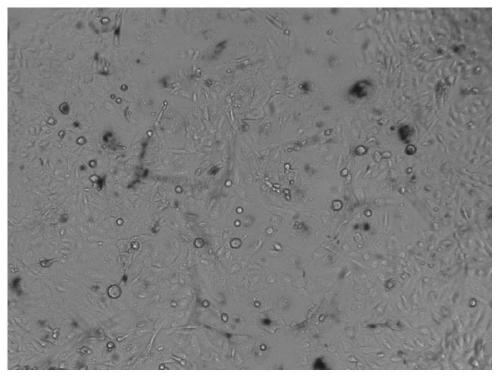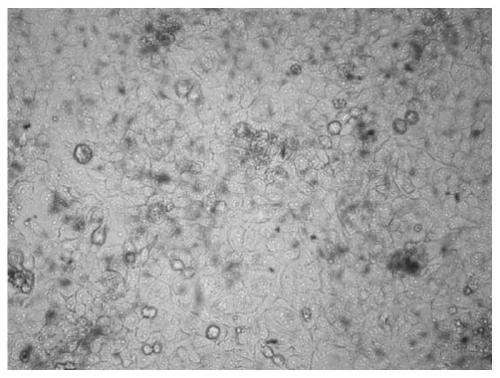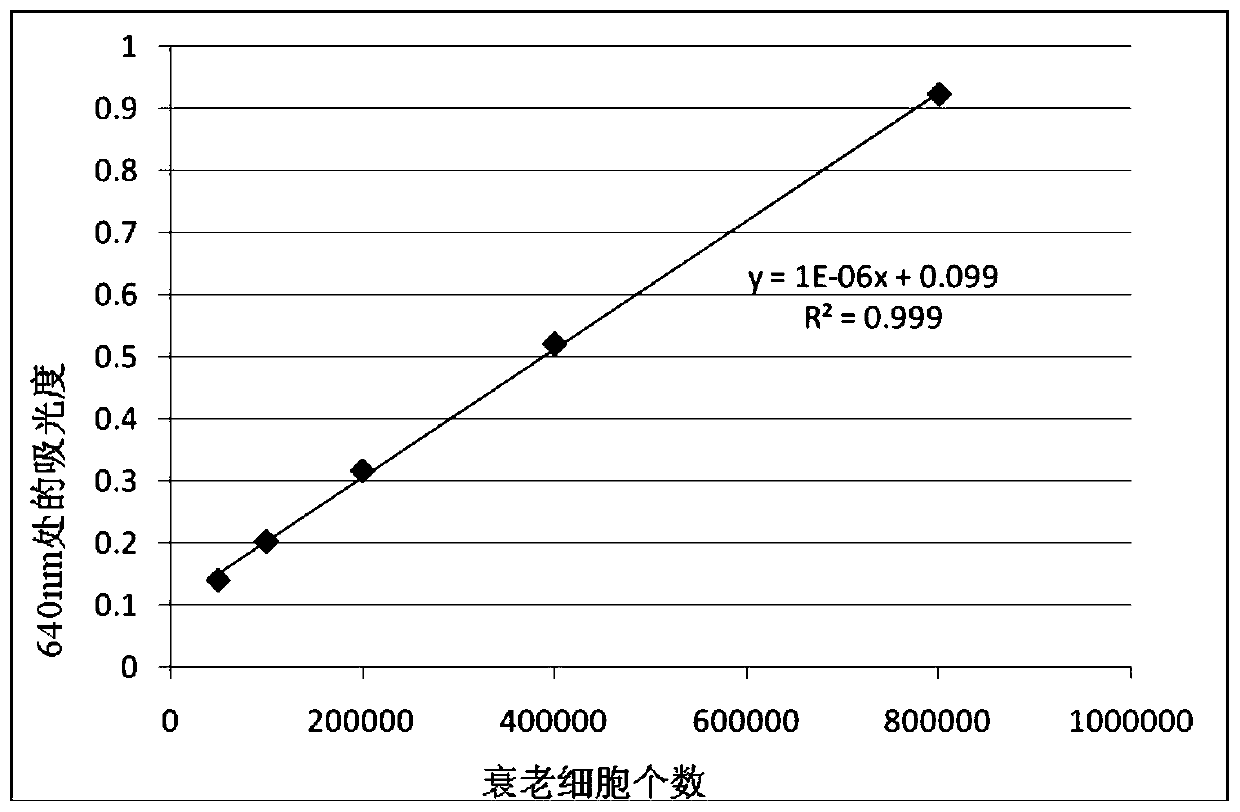Rapid quantitative senescence cell detection method based on senescence-associated beta-galactosidase
A technology of galactosidase and senescent cells is applied in the field of rapid quantitative senescent cell detection based on senescence-related β-galactosidase, which can solve the problems of time-consuming counting, different color shades, harsh experimental conditions, etc. The effect of reducing operation steps and reducing contact
- Summary
- Abstract
- Description
- Claims
- Application Information
AI Technical Summary
Problems solved by technology
Method used
Image
Examples
Embodiment 1
[0041] Take out from the incubator with 25cm 2 Human gastric epithelial cells (Ges-1) that have been cultured for 72 hours in the cell culture flask were discarded, and the cells were washed 3 times with PBS, 2 mL each time; 2 After incubating in the incubator for 48 hours, take out the cell culture bottle, blow and blow the bottom of the culture bottle, transfer all the liquid into a centrifuge tube, centrifuge at 11000g for 5 minutes to obtain a blue product, add 300μL DMSO to dissolve the blue product, and heat at 37°C for 1 hour. After it is completely dissolved, Centrifuge at 14000g for 3min, pipette 200μL supernatant into a 96-well plate, measure the absorbance value at 640nm, the absorbance value is 0.573, the absorbance is linearly correlated with the number of senescent cells, each 25cm 2 The number of senescent cells in the cell culture flask is about 470,000.
Embodiment 2
[0043] Take out Ges-1 that has been cultured for 48 hours in a 6-well plate from the incubator, discard the medium, add 1 mL of PBS to wash the cells twice, then add 2 mL of cell senescence staining solution, and store at 37 °C without CO 2 Incubate in an incubator for 72 hours, take out the cell culture bottle, blow the bottom of the culture bottle, transfer all the liquid to a centrifuge tube, centrifuge at 12,000g for 4 minutes to obtain a blue product, add 220 μL DMSO to it to dissolve the blue precipitate, heat at 38°C for 1 hour, and wait until it is completely dissolved Afterwards, centrifuge at 14000g for 4min, pipette 200μL supernatant into a 96-well plate, measure the absorbance value at 640nm, the absorbance value is 0.326, the absorbance is linearly correlated with the number of senescent cells, and the number of senescent cells is about 230000.
[0044] Table 1 The relationship between the number of senescent cells and their corresponding absorbance
[0045] ...
PUM
| Property | Measurement | Unit |
|---|---|---|
| absorbance | aaaaa | aaaaa |
| absorbance | aaaaa | aaaaa |
Abstract
Description
Claims
Application Information
 Login to View More
Login to View More - R&D
- Intellectual Property
- Life Sciences
- Materials
- Tech Scout
- Unparalleled Data Quality
- Higher Quality Content
- 60% Fewer Hallucinations
Browse by: Latest US Patents, China's latest patents, Technical Efficacy Thesaurus, Application Domain, Technology Topic, Popular Technical Reports.
© 2025 PatSnap. All rights reserved.Legal|Privacy policy|Modern Slavery Act Transparency Statement|Sitemap|About US| Contact US: help@patsnap.com



